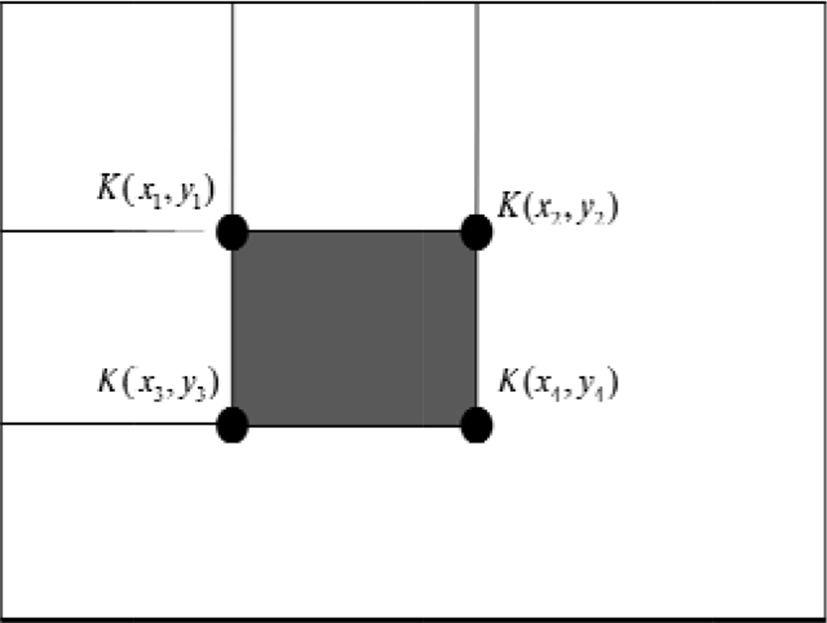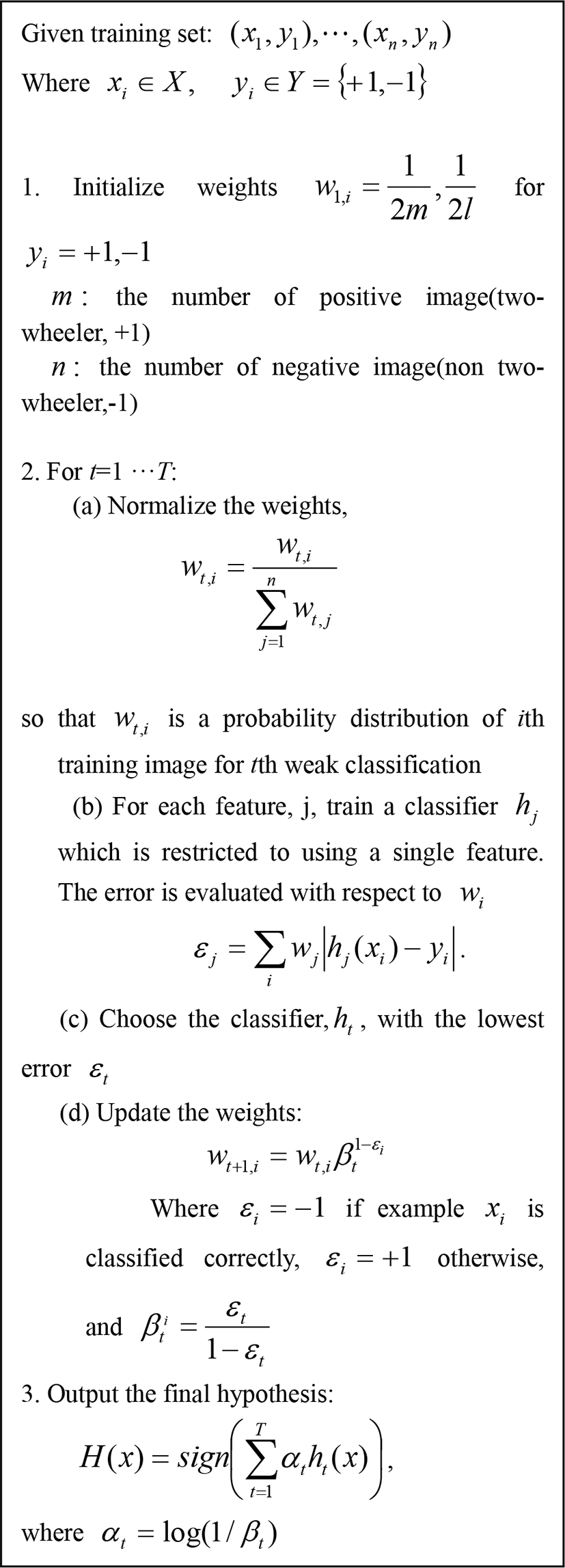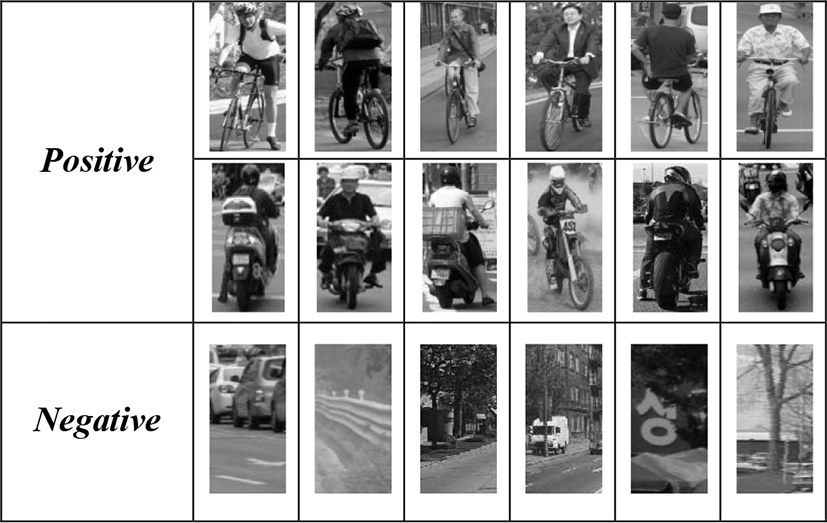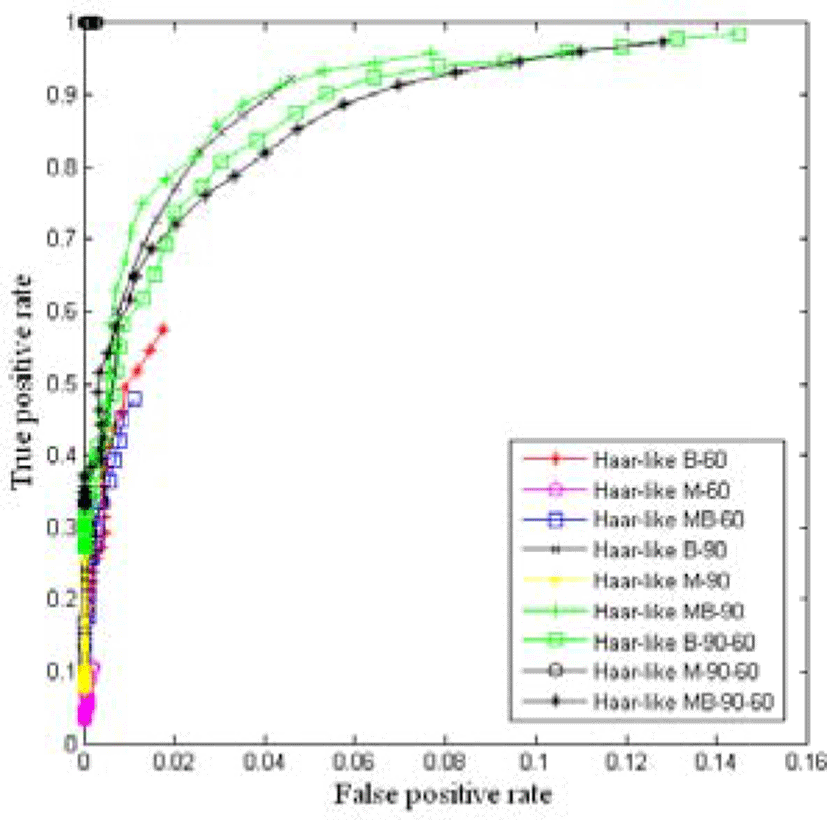I. INTRODUCTION
But while a simple device or vehicle to move things may be in past, the shape (or style) and function is very fast and variety progressed in now. The research for the vehicle was not only the improvement of the vehicle performance but also the protection of people in the vehicle after accident. Nowadays, the core of the research is changing to prevent the accident and to protect the human from inner and outer.] Pedestrian detection system is divided three categories – infrastructure enhancement, passive safety system, and active safety system [1].
The development for the safety device design of vehicles, especially airbag, bumper, electronic equipments, and etc., has been focused on protecting drivers from accident on the road and enhancing comfortability until a few years ago. The most of research for the safety of human has been worked to improve the detection rate for pedestrian and vehicle on the road [1-3]. Lately, the vulnerable road users (VRUs), consisting of human, bicyclist, two wheelers, and other small vehicles, detection has been researched to protect before accident for intelligent vehicles [4].
The motivation of this paper is as follow. Firstly, two wheelers detection system is still not considerable time investment to find good algorithm. Secondly, it is familiar with pedestrian detection which has accuracy and efficiency in still images. But it is one of the most difficult works due to a variety range of poses, as well as environmental conditions, cluttered backgrounds, and composite object (shown several shapes than pedestrian, according to the view point). So in this paper, we suggest a new algorithm to detect the two wheelers for the weak part on the road.
Many improvement of vision-based and other kinds of camera have been proposed, consequently pushing performance [1, 5-6]. Pedestrian detection system is divided several categories according to the sensors: advanced and expensive sensors such as far infrared camera and near infrared camera for night vision (FIR and NIR) [7-9], LIDAR or RADAR based on extremely high frequency [4], Laser Scanner in order to obtain much information and to make robust real-time detection [10], and radio-based mobile communication such as Global System for Mobile Communication (GSM) or Universal Mobile Telecommunication (UMTS) [1]. Despite their attractive aspects, vision-based system, particularly monocular systems has many advantages; easy extension, lower price and less computation [5, 11]. And this is still a challenging problem because of the fact that people and two wheelers can be appeared quite different shape due to differences in the clothing/hairstyle, body pose, and two wheelers model type [12]
Generally speaking, the literature on pedestrian detection system is abundant. Features can be distinguished into global features, local features, single features, and multiple features depending on how features are measured and used [13-15]. Global features operate on the entire image of datasets such as principal component analysis (PCA) [2, 16]. On the other hand, local features are extracted by dividing a sliding window into different subset region of image, with one or more kinds of features extracted in each subset region [11, 14]. Similarity, Mikolajczyk, etc., [17] divided into whole body detection and body parts detection as the local features. The advantage of using part-based research is that it can deal with variation in human appearance due to body articulation. However disadvantage of using this approach is that it is difficult to calculate due to the more complexity to the pedestrian detection problem [2]. Widely used single features for pedestrian and object detection in the literature are edge [18], shapelets [19], local binary pattern (LBP) [20][14], histogram of oriented gradients(HOGs) [21, 22], local representative field[5], wavelet coefficient [7], Haar-like features and its application features [23]. On the contrary to this, approaches based on multiple features combine several types of the above single features. For example, Wang, and etc. [24] suggested new feature extraction method using different kinds of histogram features. And another method is that different features can be used to train classifiers individually and a final decision is reached by the majority voting or by a classifier cascade [7, 25], using support vector machine (SVM) [26], neural networks, or k-NN classifiers [27].
Pedestrian detection has many algorithms that are similar to two wheelers detection. Because of this reason, our paper describes about the pedestrian detection. Pedestrian detection has allured an extensive amount of interest and received much attention from the computer vision research community over the past few years. The approaches for pedestrian detection have been proposed in terms of features, data sets, classification, and general architectures. Pedestrian detection research and data sets have been proposed by pioneering workers [28]. Feature extraction method from vision-based images has been primarily studied in Haar wavelet-based method, HOG which has direction of gradient, and local receptive field (LRF). And support vector machine, neural network, and Adaboost algorithm are applied a lot of categorizing method [29]. Papageorgiou [30] detected pedestrian based on a polynomial SVM method using modified Haar-wavelet, Depoortere etc. [31] obtained an optimized result study. And Gavrila and Philomin [32] performed comparison using distance of chamfer from edge image. Distance of chamfer is shown as the mean distance of close features. Viola etc. [33] detected moving pedestrian in more complicated region based on Haar-like wavelet and space-time difference using Adaboost algorithm. Ronfard etc. [34] accurately realized physical body detection by joint SVM based on limb classification about primary and secondary Gaussian filter. Classification based methods have comprised the mainstream of research and have been shown to achieve successful results in object detection via pedestrian detection: SVM, neural network, Adaboost, and etc. And the object classification approaches have been shown to achieve successful results in various research areas of object detections. The state-of-art, statistical pattern recognition techniques become primary methods for classifier training in pedestrian detection system.
As we mentioned previously, two wheelers similar with not only the shape of pedestrian but also detection technique based on several features. Two wheelers consist of human and machine; usually a human is upper part and machine is lower part in the shape. In this paper, we define that bicyclist (BL) is a people riding the bicycle and motorcycle driver (MD) is a people riding the motorcycle. So two wheelers detection system can be adapted to the pedestrian detection algorithms for features extraction, classification, and non-maxima suppression. HOG [21] based detector system has slow performance because of dense encoding scheme and multi-level scale images. Porikli [35] solved this problem using the concept of “Intelligent Histogram” [35] to speed up the feature extraction process. Another solution of the problem is to use a boosting algorithm [4] to speed up classification process. Because of above reasons, we tried to use modified HOG algorithm to select best features and Adaboost to improve detection rate. In this study, we invented new algorithm based on adapted HOG value which is normalized by correlation coefficient between two wheelers area and the cell. More detail about general and modified HOG will describe in section 2. This paper proposes a system for the detection of two wheelers ride on people with both efficiency and accuracy.
This paper is organized as follow. In section II, this paper explains the original feature set using general HOG algorithm and the associated evolutionary algorithm which is improved the detection rate. Section III describes the framework and training procedure of proposed two wheeler detection system. The results of their evaluation and a detailed performance analysis are presented in section VI. Section V concludes this paper.
II. Feature Extraction
Histograms of Oriented Gradients (HOGs) are feature descriptors used in computer vision and image processing for the purpose of object detection. The technique counts occurrences of gradient orientation in localized portions of an image. This method is similar to that of edge orientation histograms, scale-invariant feature transform descriptors, which uses normalized local spatial histograms as a descriptor, and shape contexts, but differs in that it is computed on a dense grid of uniformly spaced cells and uses overlapping local contrast normalization for improved accuracy [36].
Dalal and Triggs [21] described Histogram of Oriented Gradients descriptors in the context of human detection. Their proposed method is based on evaluating well normalized local histogram of image gradient orientations in a dense grid, computed over blocks of various sizes. The main idea is that local object appearance and shape can often be characterized rather well by the distribution of local intensity gradients or edge directions. This is achieved by dividing the image into cells and for each cell a one dimension histogram of gradient directions over the pixels of the cell is calculated. Then each block in the image consists of a number of cells, as shown Figure 1. After calculating x, y derivatives (dx and dy), the magnitude | m(x, y) | and orientation θ(x, y) of the gradient for each pixel I(x, y) is computed from
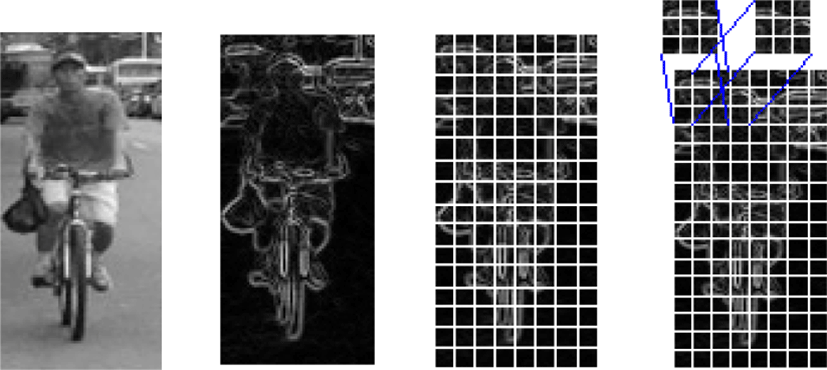
One thing to note is that, at orientation computation radian to degree method is used, which returns values between -180° and 180°. Since unsigned orientations are desired for this implementation, the orientation range of degree which is less than 0° is summed up with 180°. The next step is to compute cell histogram. Each histogram divides the gradient angle range into a predefined number of bins. In this paper, each cell, as shown Figure 1 (c), is represented by 8x8 pixel size and has 9 bins covering the orientation for [0°, 180°] interval. For each pixel’s orientation, the corresponding orientation bin is found and the orientation’s magnitude | m(x, y) | is voted to this bin. A contrast-normalization is used on the local responses to get better invariance regarding illumination, shading, etc. To normalize the cell’s orientation histograms, it should be grouped into blocks (3x3 cells). This is done by accumulating a measure of local histogram value over the blocks and the result is then used to normalize the cells in the block. Although there are four different methods for block normalization suggested by Dalal and Triggs [21], L2-norm normalization п is implemented using equation (5)
The Haar-like features value, which is first proposed by Oren, et al. [37], is used to represent the feature of horizontal, vertical, and diagonal edge in image. The purpose of these are used as overcomplete Haar wavelets for pedestrian detection. Later, Papageorgiou & Poggio [30] studied the overcomplete Haar wavelets for the detection: face, car, and pedestrian. Following the idea of overcomplete Haar wavelets, Viola and Jones [21] proposed the Haar-like rectangle features for face detection and Lienhart and Maydt [38] added rotated rectangle features to the feature set, which is called extended Haar-like features.
This calculate a sum of each components: the pixel gray level values sum over the black rectangle and the sum over the whole feature area, as shown in Figure 2.
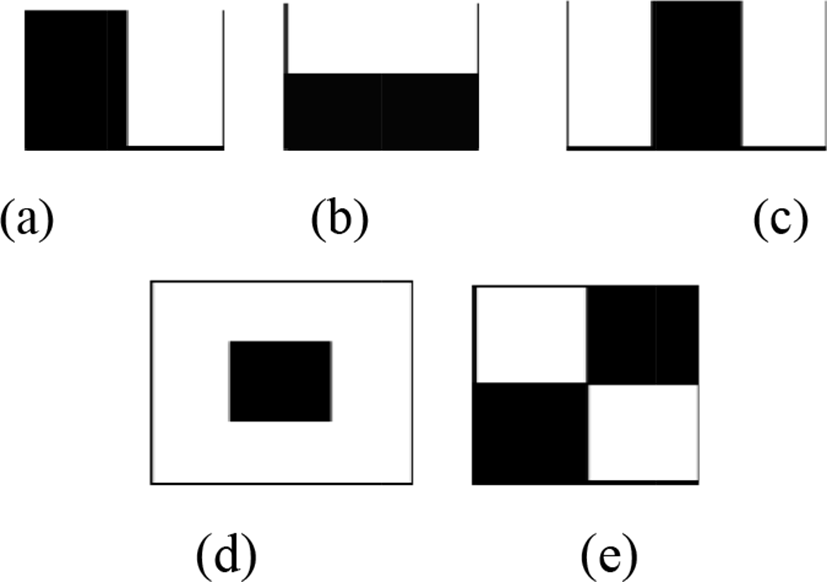
Because in a real and robust classifier is used hundred of features, the direct computation of pixel sum over multiple rectangles will make the detection work very slow and not suitable for real time application. Viola et al. [33] introduced a very effective algorithm for computing the sum quickly, so called integral image. The integral image, summed area table (SAT), is computed over the whole image I [33]. The definition of SAT (K(x, y)) is following:
The sum is done by using the rectangle corners coordinates, as described in the equation (7) and Figure 3.
A coefficient of correlation or Pearson product-moment correlation coefficient (PMCC) is a numerical measure of how much one number can be expected to be influenced by changes in another. It is expressed between -1 and 1 that measure the strength of the linear relationship between two variables. A correlation coefficient of zero means that the two numbers are not related. A non-zero correlation coefficient means that the numbers are related, but unless the coefficient is either 1 or -1 there are other influences and the relationship between the two numbers is not fixed. As previously defined, even though correlation coefficient includes the negative range, because it means that two numbers are inversely correlated, we regarded the negative value as the positive value. So this (ρ) calculator uses the following:
where σcx, σcy is standard deviation for two cell, cx and cy, and C(cx,cy) is the covariance of two cells. In General, correlation coefficient is used to explain the information we calculate about the magnitude in the one cell by observing another magnitude in the cell. As shown in Figure 2, the cells of two wheelers area are showing different type of characteristic than other area, such as background or road area (bottom). Then we emphasize that our paper proposed an innovation methods based on the relation information of two cells.
III. Classifier
Adaboost is a simple learning algorithm that selects a small set of weak classifiers from a large number of potential features according to the weighted majority of classifiers. The training procedure of Adaboost is a greedy algorithm, which constructs an additive combination of weak classifier. Our boosting algorithm is basically the same as P. Viola’s algorithm [33]. The boosting algorithm pseudo code for Adaboost is given in Fig.3. The algorithm takes as input a training set (x1, y1),…,(xn, yn) where each xi belongs to some domain X and each label yi is in some label set Y.
The final hypothesis H is a weighted majority vote of the T weak hypotheses where αt is the weight assigned to ht. Using two strong classification, in this paper suggests 2nd stage cascade method. It improves the recognition rate due to the complementary role for two feature vector of quite different type.
IV. Experimental Results
To access the effectiveness of the proposed evolutionary method, the algorithm was applied to a practical proposed method. Our system run on a platform based on Pentium 3.1 GHz and 2GB DDR memory.
For the proposed efficient two wheeler detection approach, we describe the performance of our innovative technique using correlation coefficient. We evaluate the performance of our techniques on our positive samples (two wheelers datasets; bicyclist and motorcycle driver).
Then the detection performance is compared with other typical features. Each datasets are consists of two kinds of type according to the front view point for horizontal line: 90° and 60°. And in our study, we also experiments about mixed the 90° and 60°. Our dataset contains only front and back view with a relatively limited range of poses (60° and 90°) which are scaled to size 16x128 pixels. And the negative (non-two wheelers) samples used in our experiments were extracted randomly from general street images. All our dataset examples used in this paper shows in Figure 4.
Used each training set ratio of positive and negative is 1:1 and 1:2. For more detail, the bicyclist training images are 340 examples for 60 degree and 845 examples for 90 degree. And motorcycle driver training images are 96 examples for 60 degree and 234 examples for 90 degree. We also train the mixed of two degree and types (bicyclist and motorcycle driver). In the first experiments, the performance of the traditional HOG feature has shown in Figure 5, according to the data type and degree.
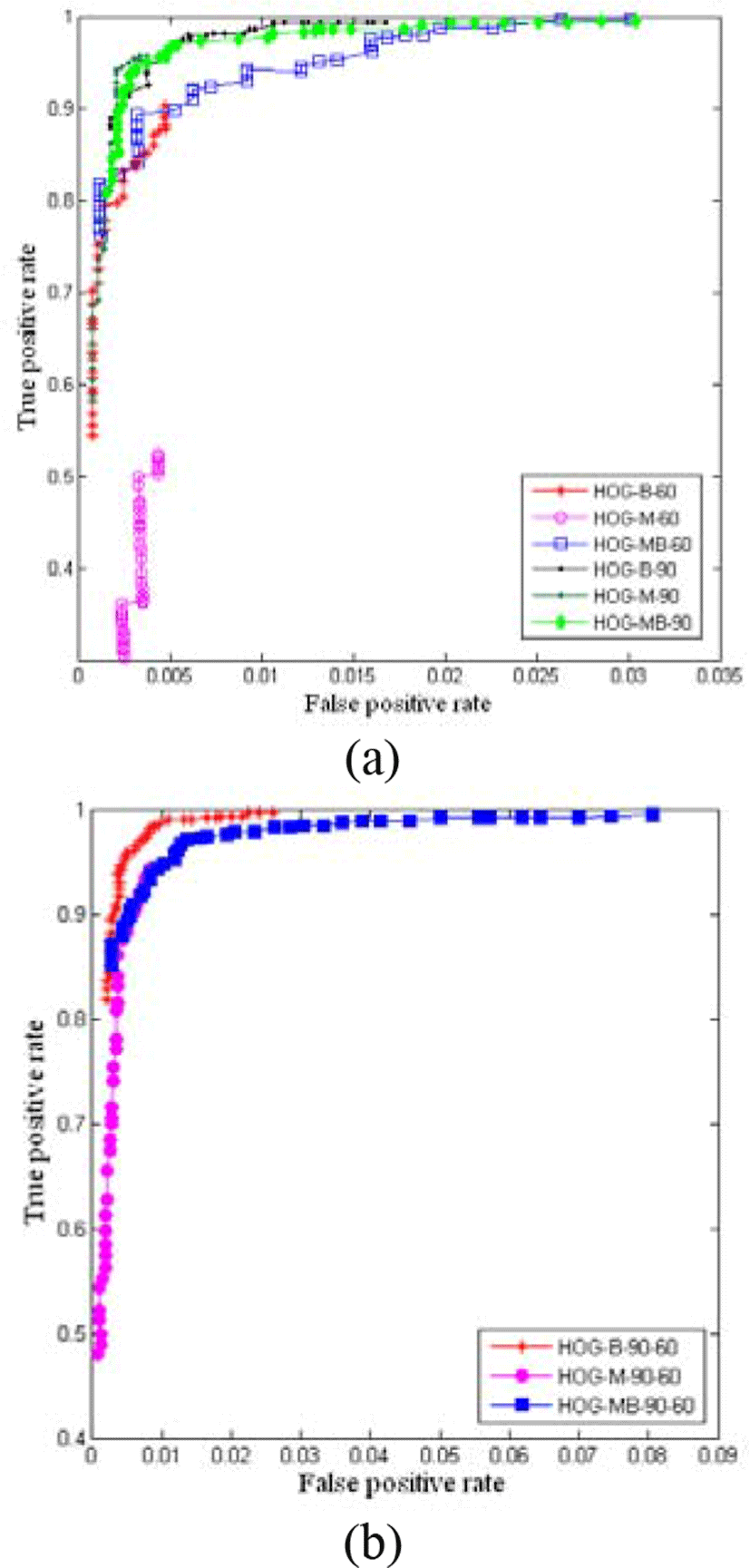
In Figure 5, we confirmed that the mixed two degree (90° and 60°) showed bigger area for the receiver operating characteristic (ROC) curves than non-mixed degree. For the HOG features, we have used a cell size of 3x3 pixels with block size of 3x3 cells, descriptor 9 orientation bins of signed gradients to train Adaboost classifiers.
Our preliminary experiments were tested on our two wheelers data set, and Figure 6 shows the ROC curves for the traditional HOG method. The ROC curves were generated as described in [33] by adjusting the threshold (θ) of the last two node of the object detector from -20 to 20. Note that in Figure 5 and Figure 6, the true positive rate is plotted against the number of false positive detections.

This paper tried two kinds of correlation coefficient (CC) methods: CC1 and CC2. The CC1 is calculated the CC value between each cell and special area which is showed human and two wheelers, as shown in Figure 7. In this paper, the special area was established the red region in the Figure 7 (c). The sum of CC value calculated by equation (8) is multiplied as the cell weight. This is normalized as following:
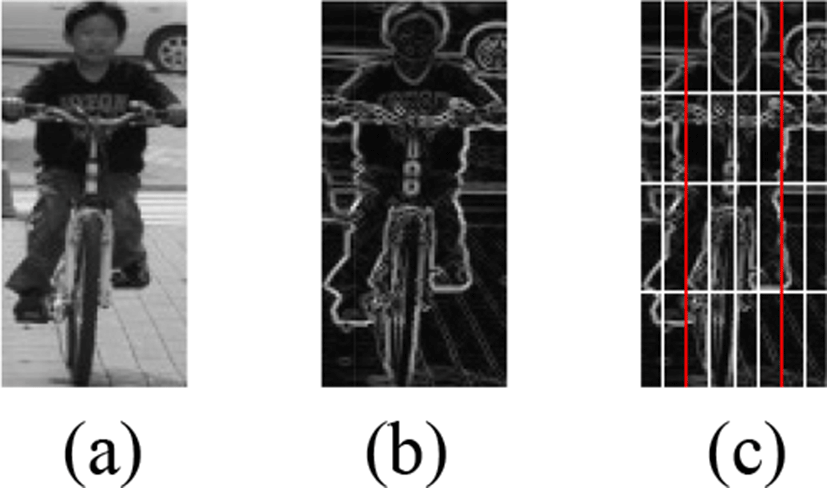
The second method, CC2 is calculated similar to CC1. But in this case, we thought that if the human and bicycle is separated to calculate the CC as the target region, it will be more enhanced performance and have remarkable features. And then, upper cell is calculated below cells and below cell are calculated upper cells, as shown Figure 8.
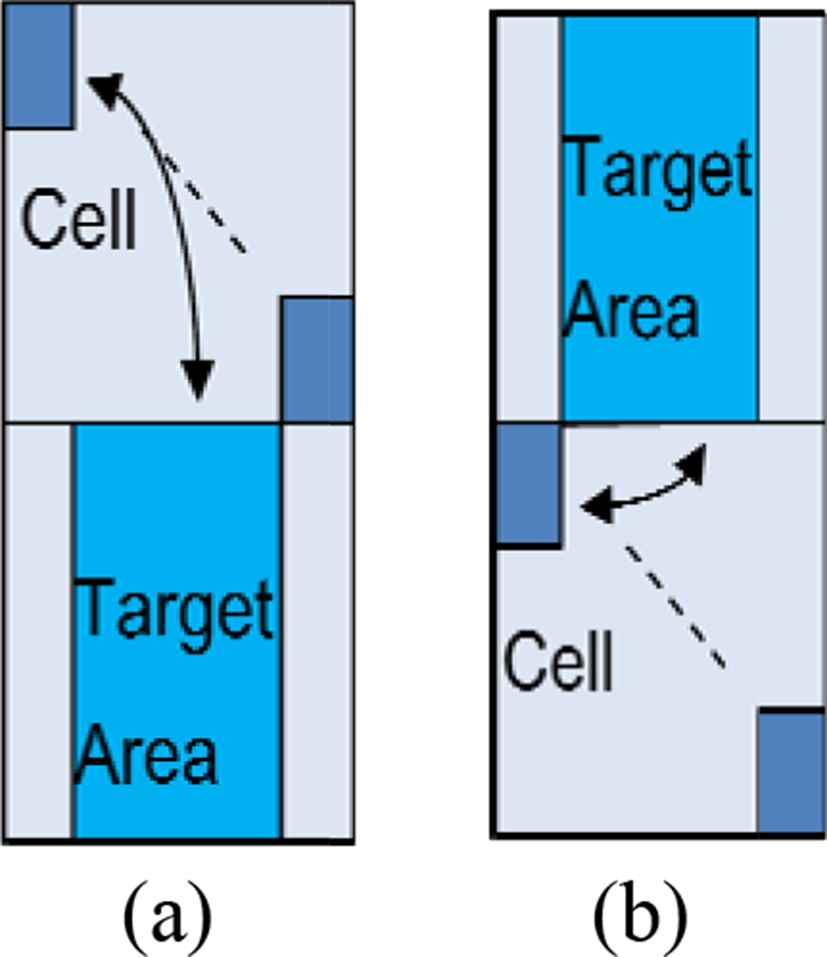
In table 1, the HOG_CC1 shows similar to the traditional HOG method for each training rate. But the HOG_CC2 presents not only higher accuracy rate than the traditional HOG and HOG_CC1 method for training rate and all degree but also less calculation time than the HOG_CC1 due to using half image. Adapted equation is as follows:
Where i is the number of CC calculation and j means cell number. K is the sum of CC and Cj means j th cell.
For the same data set, a comparison of the performance results for another different feature types are shown in Figure 9. The result of Haar-like features shows lower performance than HOG and proposed algorithms, because of concentrated left lower area in the Figure 9.
V. CONCLUSION
This representation yields not only a suggested solution for weak objects (two wheelers) on the road but computationally efficient algorithm using the correlation coefficient. It has the problem that two wheelers move faster than the pedestrian on the road. So it has very valuable research to protect the human life and to avoid the accident. To solve this problem, we proposed that HOG_CC2 used a sliding window approach has outstanding detection result than previous algorithm. Adaboost classification based methods have comprised the mainstream of research to detect two wheelers and have been shown to achieve successful results in two wheelers detection. It has been experimentally demonstrated that CC2 method generated by the correlation coefficient of local features (human bicycle) leads to better classification results than other traditional methods from ROC. Furthermore we also confirmed the recognition accuracy of HOG_CC2 has higher detection rate than HOG and HOG_CC1.
From the experimental results, we proved that the process of two wheelers detection may use smaller local features, low dimension and less computation than earlier suggested. And we consider that there are many future experiments that could be done to extend of this study (not deals with including occluded area, object change according to the weather, and others degree in this paper.
